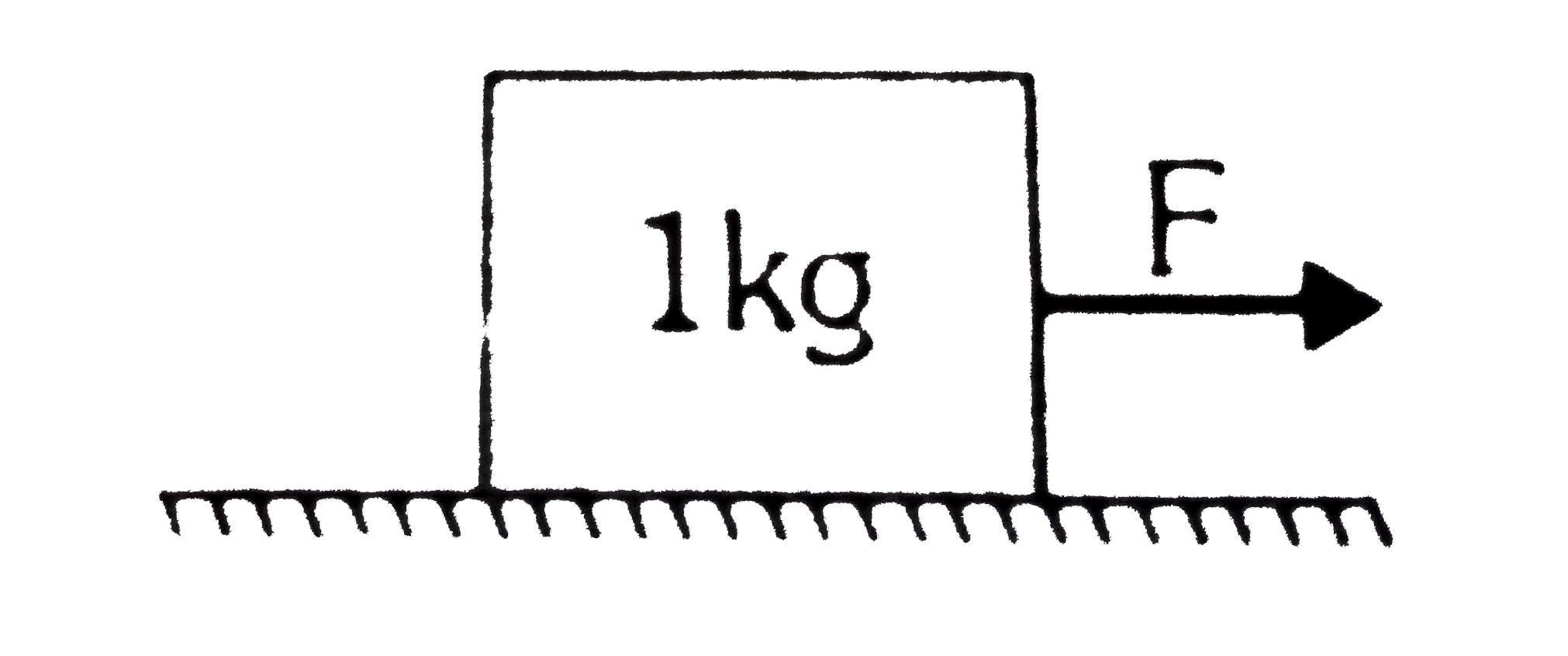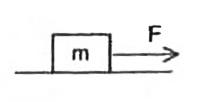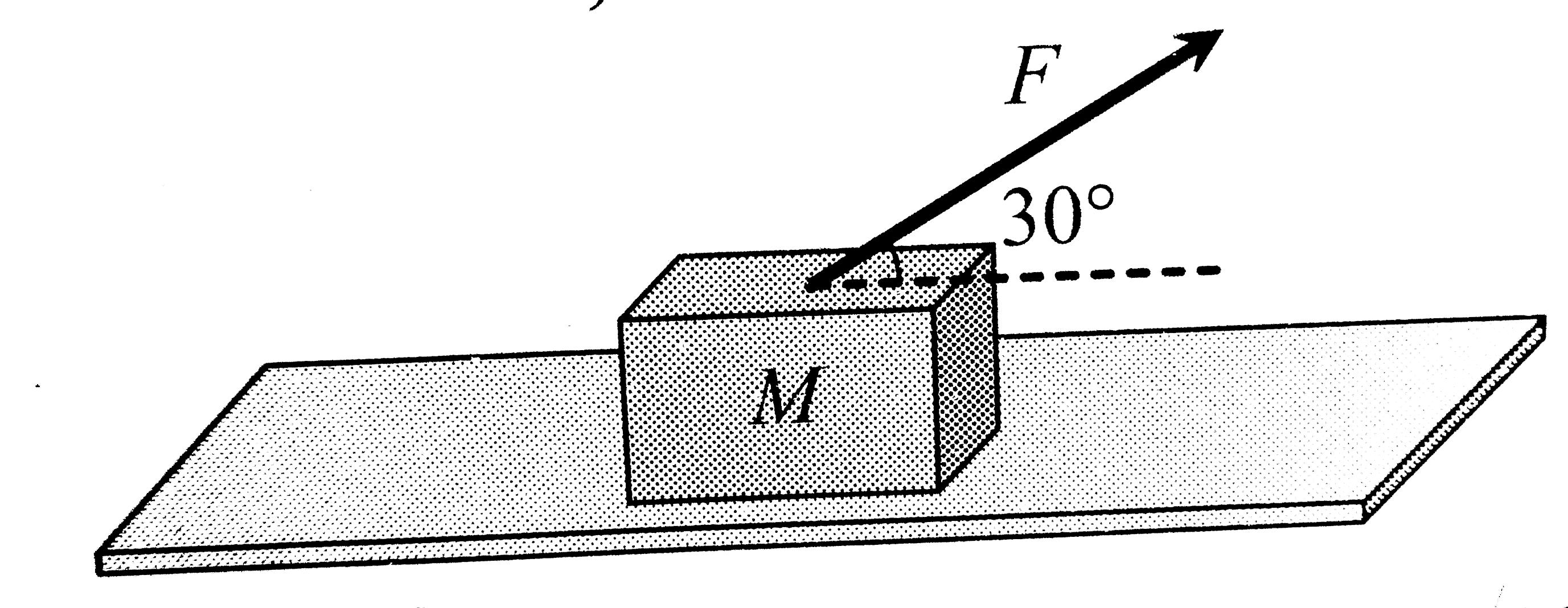A block of mass 5kg is lying on a rough horizontal surface. The coefficient of static and kinetic friction are 0.3 and 0.1 and g=10ms−2 The frictional force on the block is
25 N
15 N
10 N
zero
The correct Answer is:D
To solve the problem, we need to determine the frictional force acting on a block of mass 5 kg lying on a rough horizontal surface. The coefficients of static and kinetic friction are given, but we need to analyze the situation carefully.
1. Identify the Given Data:
- Mass of the block, m=5kg
- Coefficient of static friction, μs=0.3
- Coefficient of kinetic friction, μk=0.1
- Acceleration due to gravity, g=10m/s2
2. Calculate the Normal Force:
The normal force N acting on the block can be calculated using the formula:
N=m⋅g
Substituting the values:
N=5kg⋅10m/s2=50N
3. Determine the Maximum Static Friction:
The maximum static friction force fs can be calculated using the formula:
fs=μs⋅N
Substituting the values:
fs=0.3⋅50N=15N
4. Analyze the Situation:
Since the problem does not mention any external force acting on the block, we conclude that there is no applied force trying to move the block. Frictional force only arises in response to an applied force.
5. Conclusion:
Since there is no external force acting on the block, the frictional force is:
f=0N
Final Answer:
The frictional force on the block is 0N.
- Mass of the block, m=5kg
- Coefficient of static friction, μs=0.3
- Coefficient of kinetic friction, μk=0.1
- Acceleration due to gravity, g=10m/s2
The normal force N acting on the block can be calculated using the formula:
N=m⋅g
Substituting the values:
N=5kg⋅10m/s2=50N
The maximum static friction force fs can be calculated using the formula:
fs=μs⋅N
Substituting the values:
fs=0.3⋅50N=15N
Since the problem does not mention any external force acting on the block, we conclude that there is no applied force trying to move the block. Frictional force only arises in response to an applied force.
Since there is no external force acting on the block, the frictional force is:
f=0N
The frictional force on the block is 0N.
Similar Questions
A block of mass 20kg is pushed with a horizontal force of 90N. If the coefficient of static & kinetic friction are 0.4 & 0.3, the frictional force acting on the block is: (g=10ms−2)
View SolutionA block of mass 1kg is at rest on a rough horizontal surface having coefficient of static friction 0.2 and kinetic friciton 0.15, find the frictional forces if a horizontal force,
(a) F=1N (b) F=1.96N (c) F=2.5N is applied on a block

View SolutionA block of mass 2 kg is on a horizontal surface. The coefficient of static & kinetic frictions are 0.6 & 0.2 The minimum horizontal force required to start the motion is applied and if it is continued, the velocity acquired by the body at the end of the 2nd second is (g=10ms2)
View SolutionA block of mass m = 1 kg is at rest on a rough horizontal surface having coefficient of static friction 0.2 and kinetic friction 0.15.

Find the frictional forces if a horizontal force
(a) F = 1 N,
(b) F = 1.96 N and
(c) F = 2.5 N are applied on a block which is at rest on the surface.
View SolutionA block of mass 5 kg is placed on a rough horizontal plane . The coefficients of stastic and kinetic friction between the block and surface are 0⋅5and0⋅3 respectively. A force of 100 N is applied at an angle 30∘ with the horizontal as shown in the figure . The acceleration of the block will be [ g = 10m/s2]

View Solution
A force F=2t is spplied at t=0 sec to the block of mass m placed on a rough horizontal surface. The coefficient of static and kinetic friction between the block and surface are μS and μk respectively. Which of the following graphs best represents the acceleration vs time of the block(μS>μk)?
View Solution
A force F=2t is spplied at t=0 sec to the block of mass m placed on a rough horizontal surface. The coefficient of static and kinetic friction between the block and surface are μS and μk rspectively. Which of the following graphs best represents the acceleration vs time of the block(μS>μk)?
View SolutionA horizontal force just sufficient to move a body of mass 4kg lying on a rought horizontal surface is applied on it .The coefficient of static and kinetic friction the body and the surface are 0.8and0.6 respectively If the force contines to act even after the block has started moving the acceleration of the block in ms−2 is (g=10ms−2)
View SolutionA block of mass 4 kg is kept on a rough horizontal surface. The coefficient of static friction is 0.8. If a forace of 19 N is applied on the block parallel to the floor, then the force of friction between the block and floor is
View SolutionA block of mass m=5kg is resting on a rough horizontal surface for which the coefficient of friction is 0.2 . When a force F=40N is applied, the acceleration of the block will be (g=10m/s2) .

View Solution
